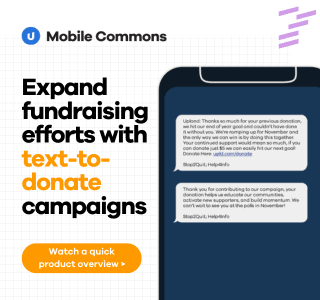How do you craft health care messages that will inform your audience and change their behaviors? The CDC has written a guide that can help you write better texts. The guide was designed to share the CDC’s insights into how to create effective outreach across social media – Facebook, Twitter, and SMS. It turns out the CDC’s not only experts on global health. They’re also astute marketers who know the most powerful way to convey complex messages in just a few characters.
The guide ranges from the highly general (what sort of material makes good content) to the incredibly specific (how many characters should your text messages be). In this post, we’ve pulled out some of the key lessons the guide imparts.
General Rules for Social Outreach
Be Clear and Concise
- Use easy-to-understand language.
- Catch the reader’s attention with a compelling lead that provides the most important information first.
- Use abbreviations sparingly. Avoid “text speak.”
Be Action-Oriented
- Have a clear call to action, encouraging people to take concrete steps.
- Explain why the action is important.
- Use strong verbs such as “learn,” “watch,” or “join.”
Be Useful and Relevant
- Send messages that are tied to current events, seasons, or observance days.
- Provide concrete knowledge and additional resources.

Use Web Content as a Source of Material
- News articles, fact sheets, and FAQs are excellent sources of additional material.
- Web content has often been developed, edited, and cleared through the proper channels.
- Just be sure to rework your web content so it makes sense over text.
Specific Insights into SMS Messaging
Keep Your Texts Short
- Messages should be around 140 characters to leave room for help messaging and links.
- Customize your Texts
- The CDC asks users questions about themselves to better target their messages.
- Questions include age, gender, health condition, subscriber’s role, and zip code.
Identify Yourself
- You should always identify yourself in your text, so your subscribers know who the text is from.
Provide Access to More Information
- Include a phone number or URL in your message, so users can follow up.
- Make sure all numbers are numerical and formatted, so readers can click to call.
Include Opt-Out and Help Instructions
- Make sure your subscribers can opt out of your campaign by replying STOP or QUIT.
- Provide help messages to users who reply HELP.
Learn More
If you want to learn more, you should check out the full guide at the CDC’s website. It’s filled with additional information, and links to even more CDC guides.
We’ve become experts in text messaging’s best practices from our work on thousands of mobile campaigns – including initiatives with the National Institutes of Health, the New York City Department of Health, the California Department of Public Health, Harvard Pilgrim Health Care, and many more. We’ve even launched Upland Mobile Messaging for Health, a product designed to make it easy for health care providers to launch mobile campaigns of their own.

